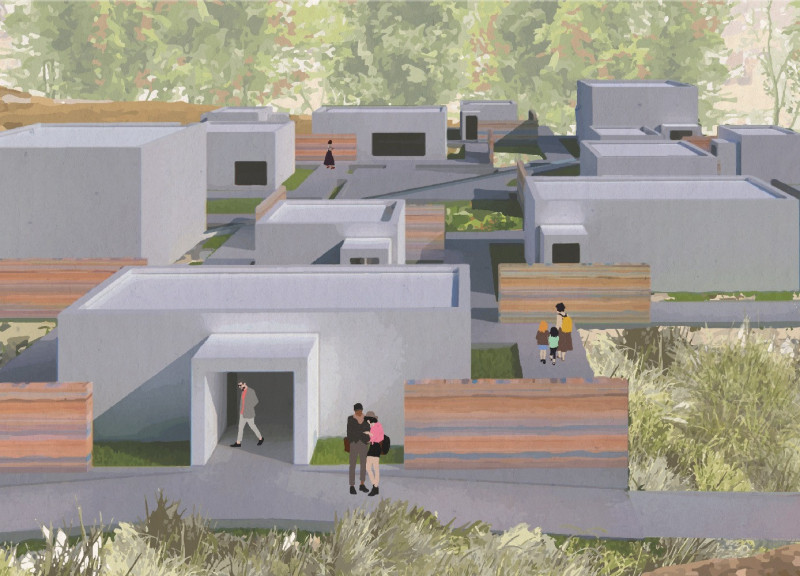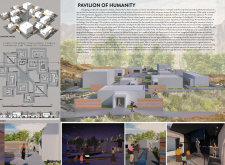5 key facts about this project
The Pavilion of Humanity is a project that explores the diverse nature of human identity. Located in a setting adaptable to different cultures, it acts as a cultural hub for thought and engagement. The design revolves around showcasing various historical civilizations like the Mesopotamians, Egyptians, Greeks, and Native Americans. The goal is to create a space that promotes interaction and encourages a deeper understanding of what it means to be human.
Design Layout
The layout of the Pavilion focuses on a central performance area, which is reminiscent of how ancient communities gathered. This arrangement fosters social interaction and creates opportunities for knowledge sharing among visitors. Modular spaces allow for flexibility, making the Pavilion suitable for various uses and ensuring that it can accommodate a wide audience. It serves a functional purpose while also reflecting themes of community and togetherness.
Exploring Duality
A notable aspect of the Pavilion is its emphasis on the duality of human nature. This is represented through two exhibitions that focus on reason and emotion. By presenting these opposing themes, the design invites visitors to think critically about their own experiences. The architectural form itself reflects this duality, encouraging a dialogue about the complexities of humanity and the shared journey of individuals.
Engagement with Nature
The Pavilion's connection to the landscape is essential to its design. Prismatic forms create visual relationships with their surroundings, moving away from conventional architecture. This approach highlights the interaction between the constructed environment and nature. It emphasizes sustainability and acknowledges the bond between humanity and the natural world, making a statement about ecological responsibility.
Narrative Through Water
Incorporating water as a design element adds an important narrative to the Pavilion. This water flow narrates a timeline of human evolution, with stones inscribed to guide visitors through the exhibits. This feature enhances the storytelling aspect of the space, allowing people to connect physically with history. The flowing water serves as a symbol of the journey of humanity, making the Pavilion a place for thoughtful reflection on human progress.




















































